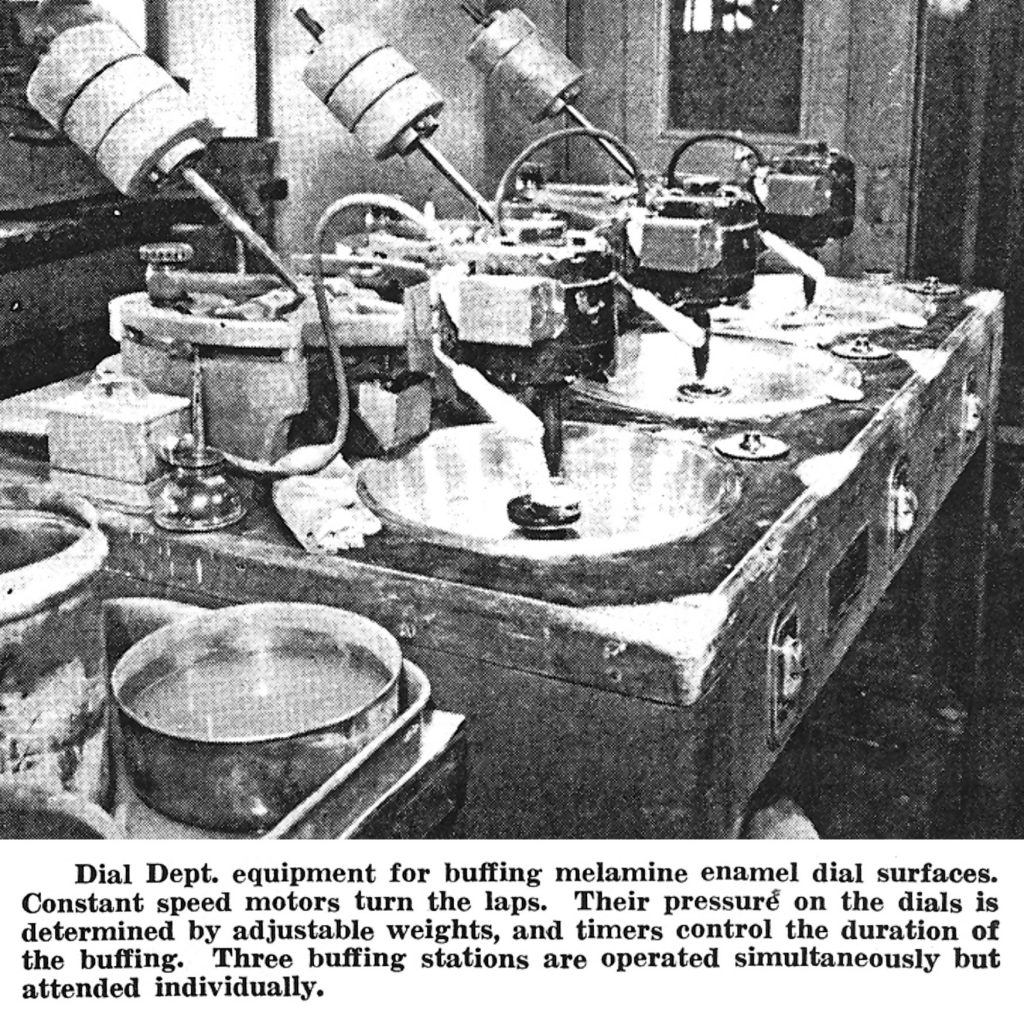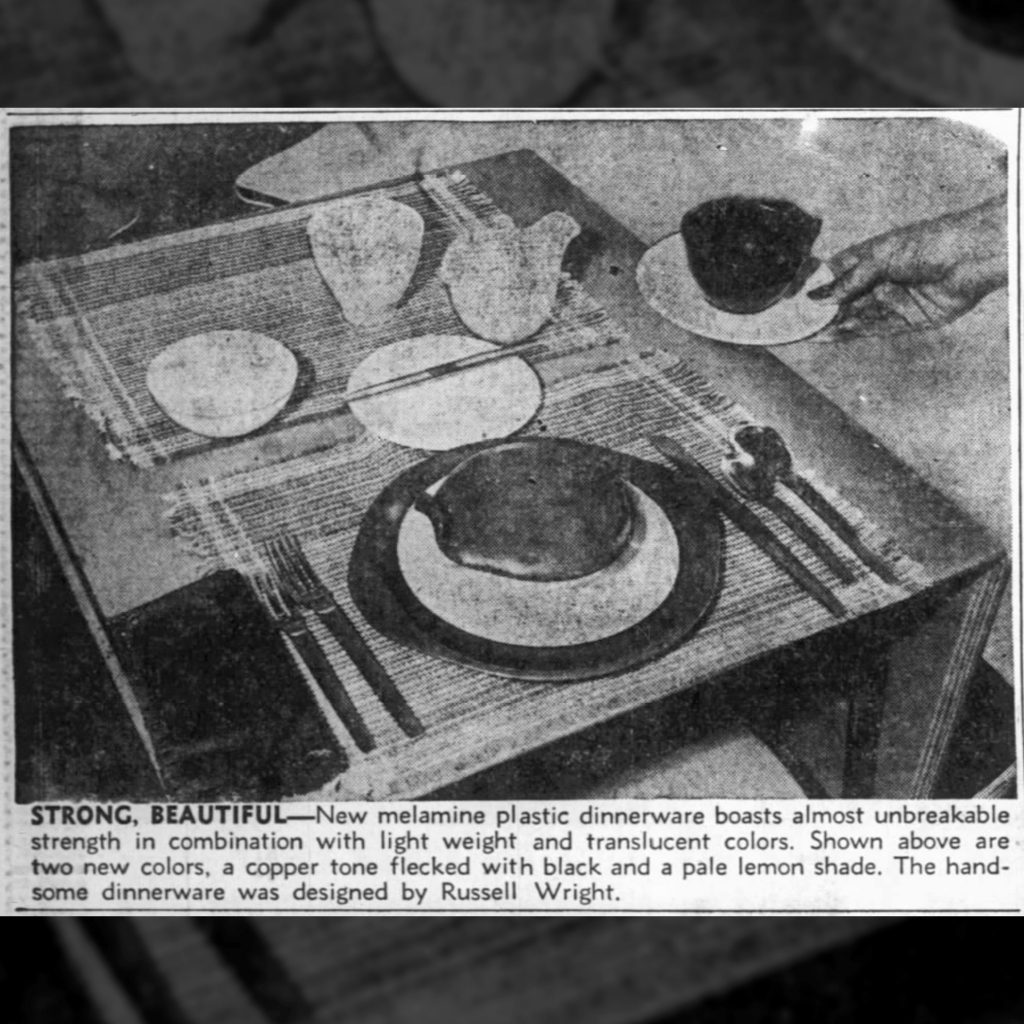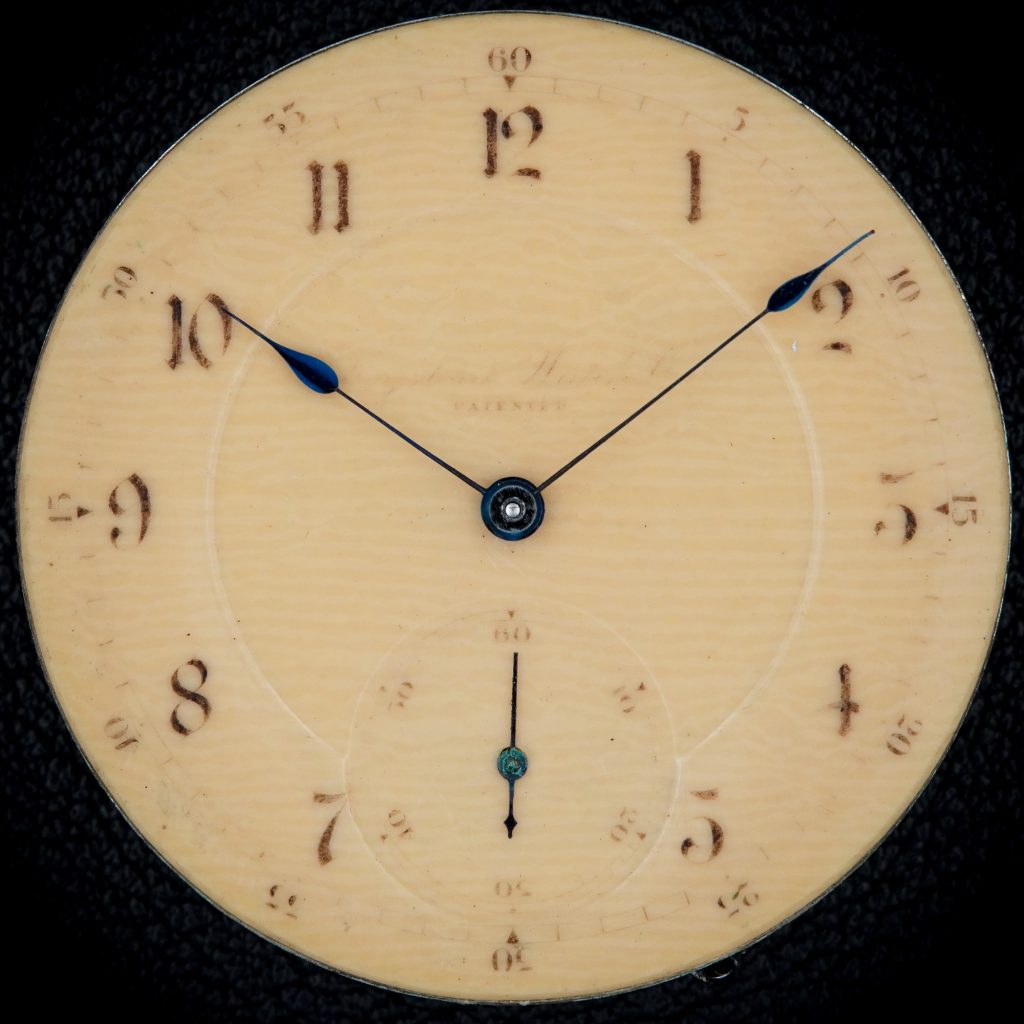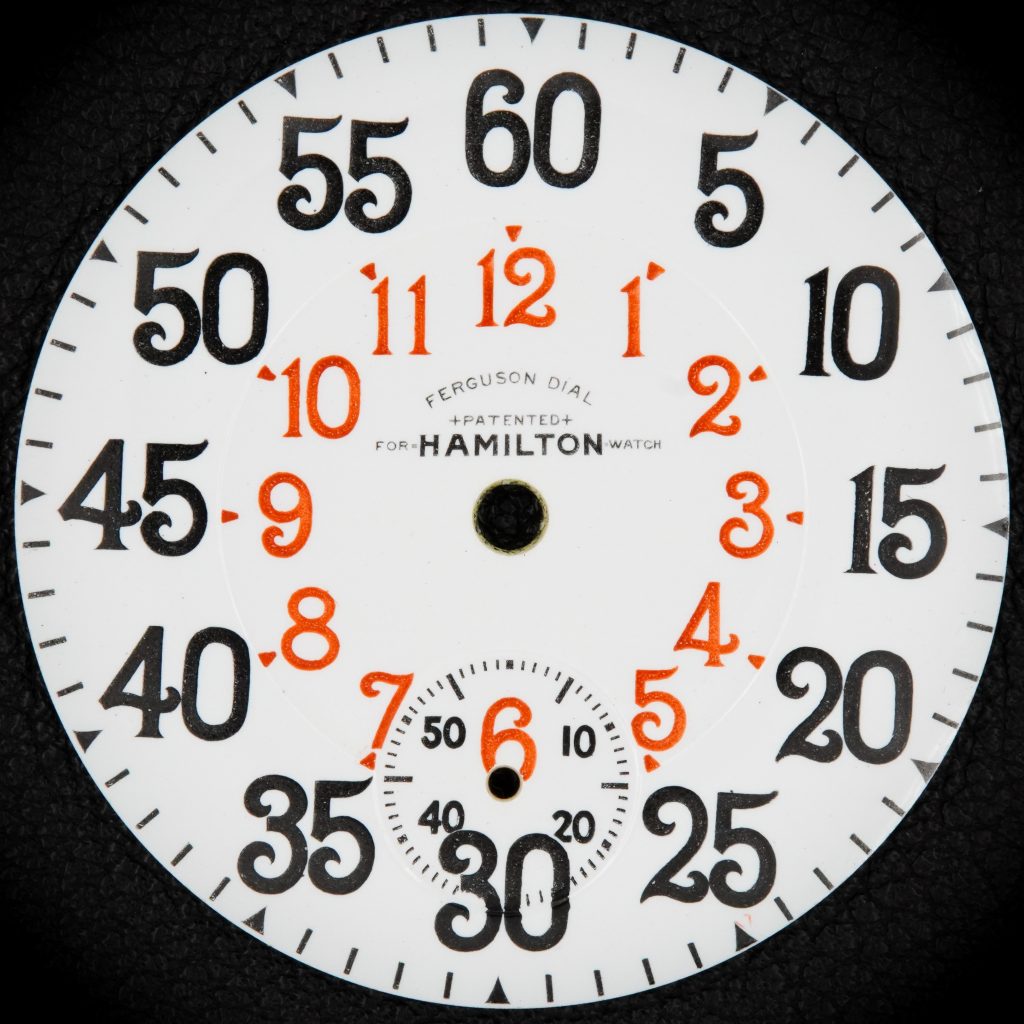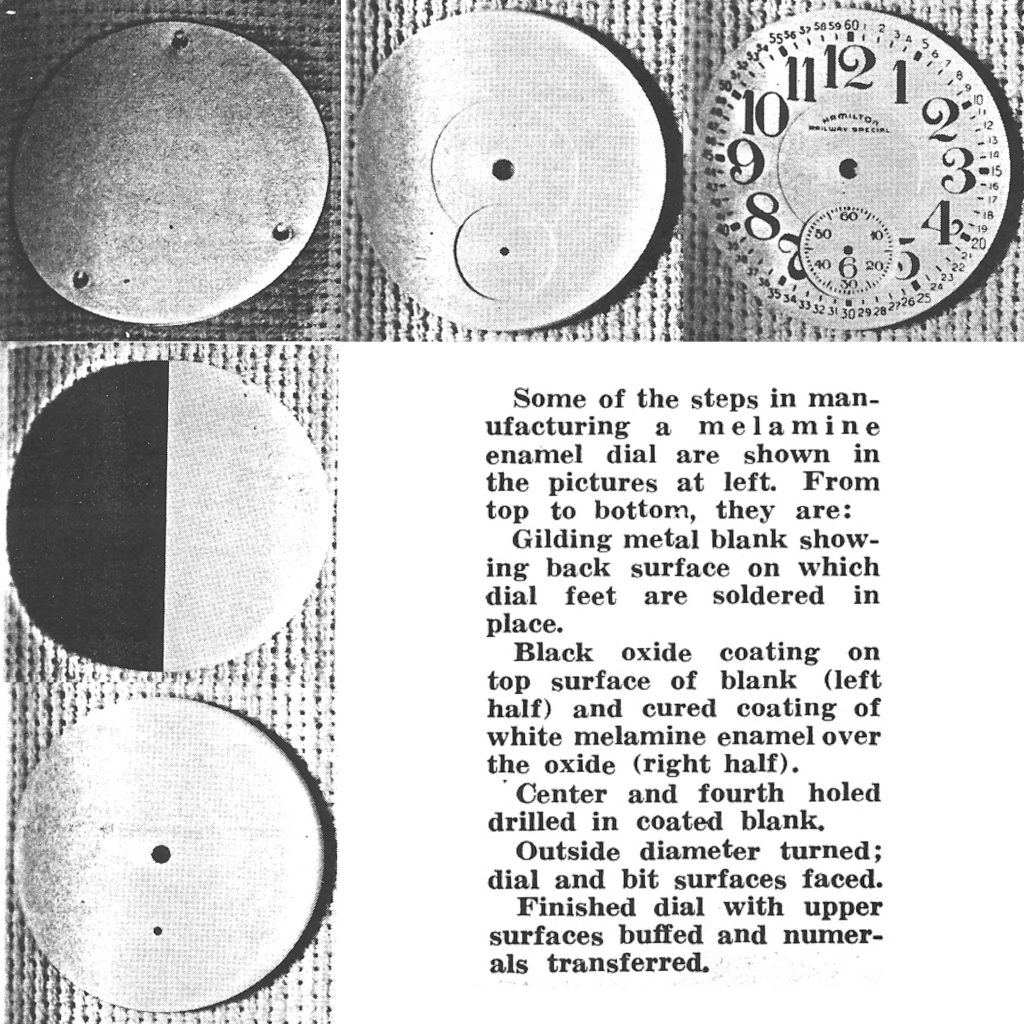
Hamilton

Pictured: Melamine Dial Buffing Machines at the Hamilton Watch Company Factory, Excerpt from “Research Provides New Materials For R.R. Type Dials,” Timely Topics, July 1953. Around 1945, the Hamilton Watch.
Pictured: Newspaper Excerpt Featuring Melamine Dinnerware, The Evening Eagle (Wichita, Kansas), November 11, 1953. Melamine was initially discovered by German chemist Justus von Liebig in 1834. Despite having unique properties,.
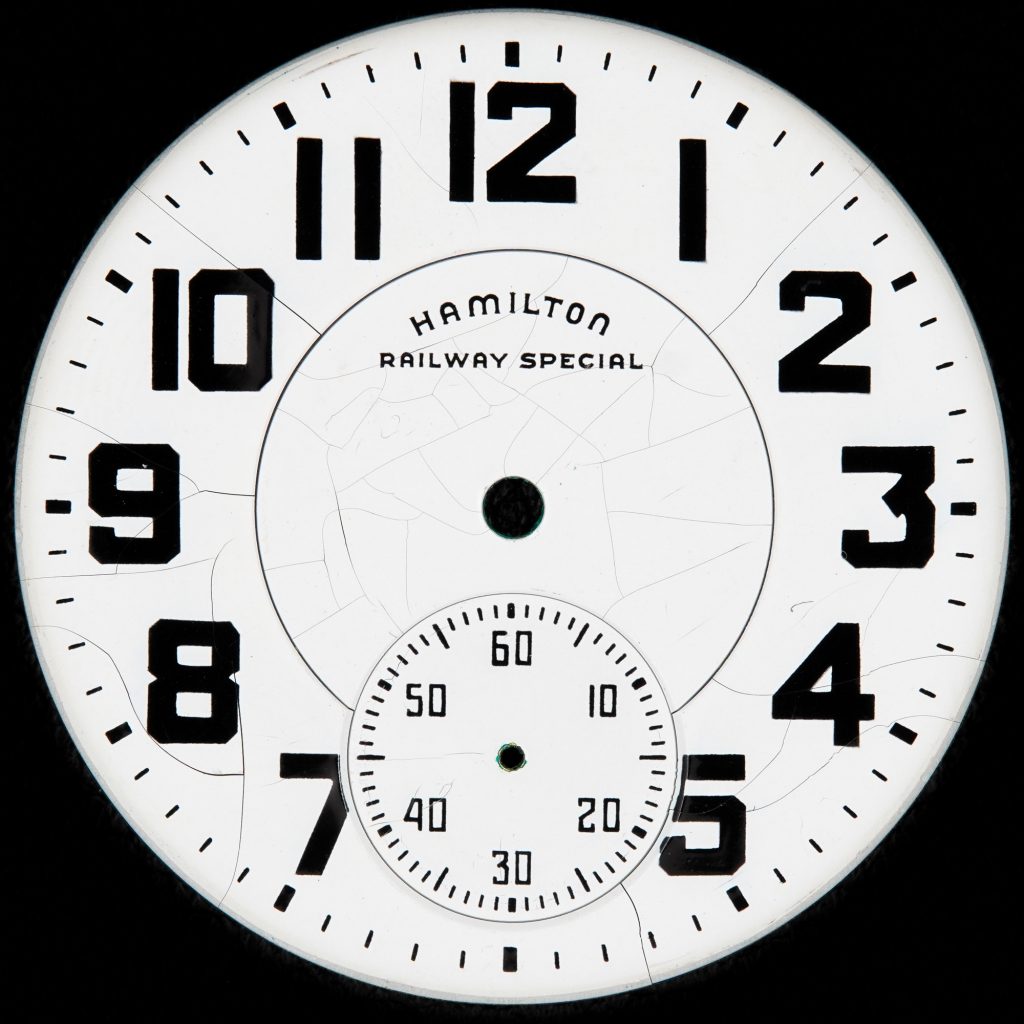
Pictured: Celluloid “French Ivory” Watch Dials from the Keystone Watch Company In seeking an inexpensive alternative to standard enamel dials, the Keystone Watch Company introduced a watch dial manufactured from.
Pictured: Hamilton 8112 Ferguson Dial, Made for Hamilton Watches, c.1915. Louis Buck Ferguson iterated through several early variants of his unique railroad dial before settling on the design widely recognized.

